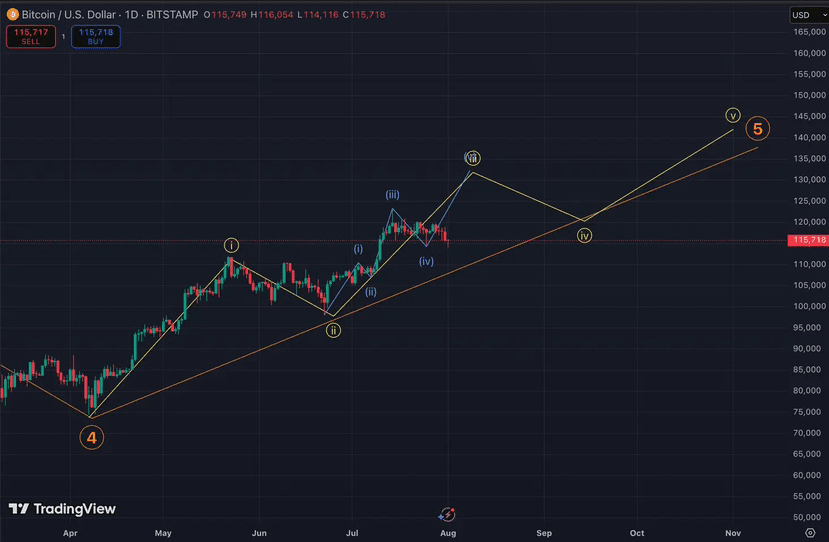According to Ledn's Chief Information Officer John Glover's Elliott Wave analysis, Bitcoin is expected to rebound to around $140,000 this year before entering a bear market in 2026.
"BTC price is firmly trapped in a summer lull, continuing to follow the expected trajectory, and will soon complete the 5-wave move depicted by the blue line in the following [chart], which will complete the third wave (yellow line) of the fifth wave (orange line). In summary, we still aim to reach $135,000 to $140,000 by the end of 2025,"
What is the Elliott Wave?
Ralph Nelson Elliott introduced the Elliott Wave Theory in his 1938 book (The Wave Principle), which is a method of understanding market movements by recognizing that they follow predictable, repeating patterns, like natural fractals.
The core idea is that crowd psychology moves in cycles, creating a five-wave pattern in the direction of the major trend or impulse move. The five-wave structure includes three impulse waves (1, 3, and 5) and two corrective waves (2 and 4). Sometimes, impulse waves are extended and powerful, consisting of their own 5-wave structures.
The three-wave correction structure follows a five-wave structure. This 5-3 wave pattern repeats on larger and smaller scales, allowing observers to predict future price movements based on the market's current position in a broader context.
In the coming weeks, the impulse wave (iii) may reach a high of $130,000, followed by a price drop to around $110,000 in September, completing the corrective wave (iv). After that, the last impulse wave (v) of the larger impulse wave 5 will resume, marking the peak of the bull market at around $140,000.
"Once we reach the $140,000 area, how far the market will go will be widely debated. I believe that in 2026, we will hear bullish quotes of $250,000 to $500,000. This is not my argument, as I believe we will enter a bear market for BTC in 2026," Glover said.
This is quite different from many views!
Glover's view sharply contrasts with the popular narrative that institutional adoption through ETFs has broken Bitcoin's four-year cycle, which historically indicates peak prices this year followed by an extended bear market.

